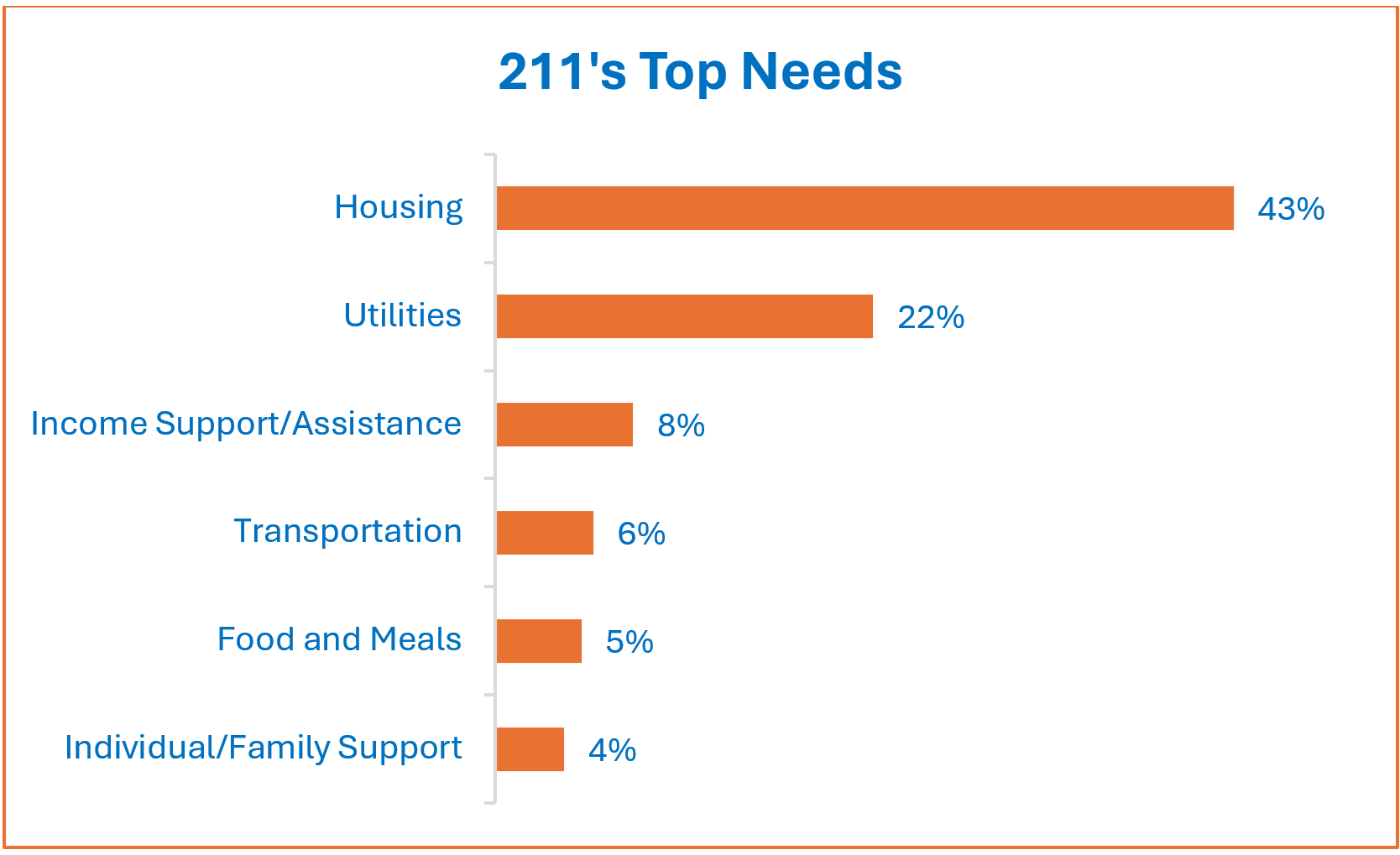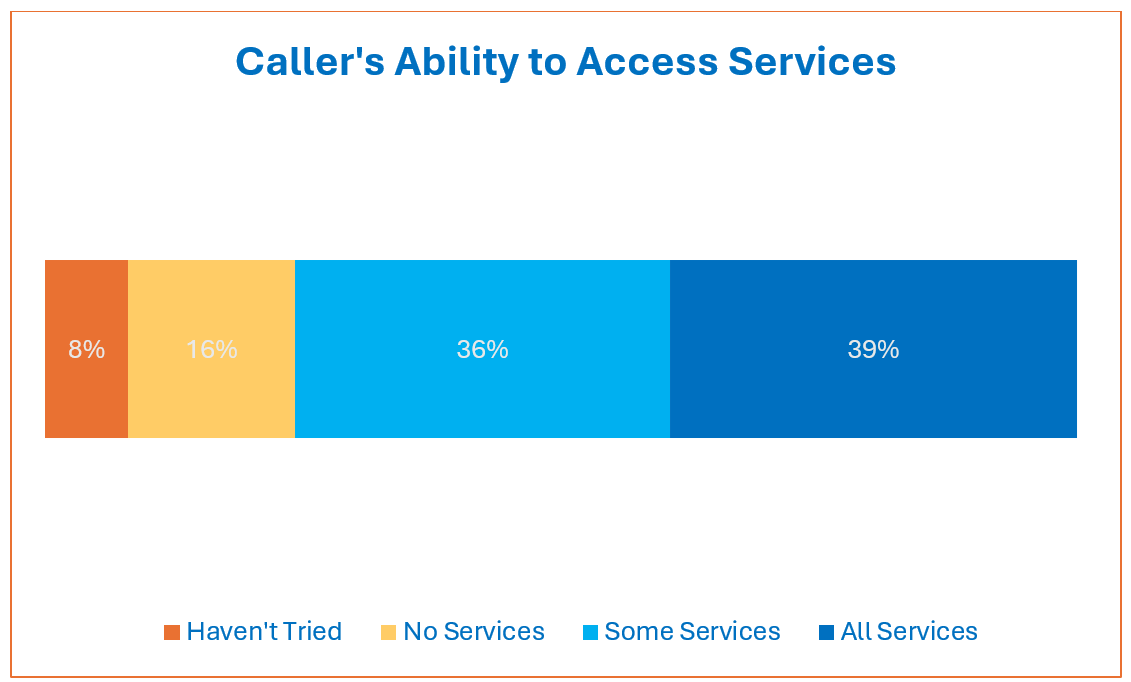Voices of Need: Inside the 211 Helpline Experience
Click below for an example of what a 211 call sounds like:
Introduction: A Closer Look at 211's Impact
With 313,000 contacts from July 2022 – June 2023, the 211 Helpline is an asset to people from all different backgrounds. While no two 211 calls are exactly alike, the average 211 caller is 46 years old, has two family members and is most likely to live in an urban area. One out of every two callers are looking for assistance with housing or utilities, which are by far the highest categories of need.

Callers to 211 face more financial instability than the rest of the community. 90% of 211 callers reported they would not be able to cover an unexpected $400 expense, compared to 37% nationally. This is despite half of 211 callers reporting that they are employed and 40%, including 23% of those employed, are receiving SNAP benefits.
Accessing Essential Services: The Role of 211
Individuals who call 211 are matched with their best fit resource referral by skilled community resource specialists. Three out of four 211 callers report being able to access some or full services from the referrals they receive from 211. This number increases to 82% when you account for callers who never attempt to access services from these referrals. However, as resources from COVID-relief funding run out, organizations have more limited resources to serve the community during a time of still-elevated need. While 55% of 211 callers surveyed described the availability of resources as good or very good, another 25% rated them as fair or poor. UWM works closely with our partners to maintain and continue improving upon the available community resources that are crucial to assist our 211 callers.

Frequent Users: A Deep Dive into Persistent Needs
Thirteen percent of 211’s callers are classified as frequent users*. These callers called in more than one month out of the calendar year. While they are only 13% of callers, they make up 38% of calls requesting referrals for a need. Frequent users make up some of our most at-risk community members who are facing persistent need. Like the rest of 211 callers, they overwhelmingly are looking for housing or utility assistance – with 89% of frequent users asking for either housing or utility assistance at some point during the year. Frequent user needs are persistent, meaning the issue they called for the first time is most likely to be the issue they call for when contacting 211 a second time. Frequent users experience high levels of ongoing need, averaging three calls to 211 during 2022, with some callers making up to 21 phone calls during the year
*Frequent users are defined as calling in more than one month out of the calendar year for a new need. Frequent user data is taken from the 2022 calendar year.
Visit the NE & IA 211 Dashboard
Callers to 211 represent some of our most vulnerable community members and can tell us about trends and needs across Nebraska and Iowa. Visit the NE and IA 211 dashboard to learn more about specific needs in your area.
Learn MoreABOUT THE AUTHOR

Maret Wibel, is the Community Research Analyst for the 211 Contact Center. In this role she leads the data analysis for 211 covering NE and IA, representing more than 313,000 contacts each year.